
Philippines
| Full Name | 12 Commonwealth of the Philippines | |
| Alliance | Allies - Minor Member Nation or Possession | |
| Possessing Power | United States | |
| Entry into WW2 | 7 Dec 1941 | |
| Population in 1939 | 16,000,303 | |
| Military Deaths in WW2 | 57,000 | |
| Civilian Deaths in WW2 | 900,000 |
Contributor: C. Peter Chen
ww2dbaseThe Philippine Islands had been ruled by Spain since the 1500s. As the result of the Spanish-American War, the United States gained this colony, and the islands were immediately plunged into the Philippine-American War as the First Philippine Republic fought, unsuccessfully, to rid of a new colonial power. Between 1902 and 1935, the Philippine Islands were governed by the Insular Government, which slowly gave more control to Filipinos. During this period, foreign trade, medical care, and education were significantly improved. In 1934, the Tydings-McDuffie Act of the United States Congress established the Commonwealth of the Philippines, and established a ten-year transition period at the end of which the United States would grant the islands full independence. US President Franklin Roosevelt formally approved the act in May 1935, and Frank Murphy stepped down as the last American governor-general of the region, though he would remain as the first high commissioner to administer the transition. In the morning of 15 Nov 1935, the Commonwealth of the Philippines was officially inaugurated, with Manuel Quezon as the first president; Quintin Paredes would be the first (of three) resident commissioners who would represent Philippines in the US Congress. Among Quezon's first efforts as president was to reform the Armed Forces of the Philippines; he asked retired US Army General Douglas MacArthur to be the commanding officer of the Filipino forces, making MacArthur the only American officer to hold the rank of field marshal in a foreign military, the only non-Filipino citizen to command Filipino forces, and the only field marshal of the Filipino military to date. MacArthur modeled the Filipino Army after the Swiss citizen-soldier system of conscription that trained 4,000 soldiers yearly in 128 camps, with both numbers increasing annually. He estimated that it would take at least ten years to develop a force capable of deterring foreign aggression against the Philippines. In the summer of 1941, MacArthur was reactivated in the US Army due to rising tensions. In theory, this allowed MacArthur better access to build the defenses of the Philippine Islands; in actuality, however, although several US military formations arrived to reinforce, the weapons and vehicles he requested from the United States were denied, citing Lend-Lease responsibilities to European allies as the reason. MacArthur would also devise a naval defense centered around small and inexpensive torpedo boats, but even these would be denied to the Philippines.
ww2dbaseWhen the Pacific War opened in Dec 1941, MacArthur and the Filipino and American forces under his command were caught unready, air forces destroyed on the ground and supply warehouses left less-than-full. The American-Filipino forces on the main island of Luzon fell back toward the Bataan Peninsula and were ultimately besieged on the island of Corregidor, which surrendered in May 1942. Japanese atrocities began at the very beginning of the occupation. The captured Americans and Filipinos were marched from Bataan to Luzon proper with little food, water, or rest; coupled with rampant acts of violence, between 7,000 and 10,000 died on what was to be named the Bataan Death March.
ww2dbaseThe Japanese occupation administration, the Council of State, governed the Philippine Islands with the cooperation of much of those among the Filipino political elite who remained in the Philippines. In Oct 1943, Japanese nominally granted the Philippines independence, but in actuality retained control over much of the administration. The Japanese occupation was opposed by several resistance groups which, collectively, seriously challenged Japanese authority in over half of the area of the Philippine Islands. About 260,000 Filipinos actively participated in resistance activities. Some of the groups were led by Filipino or American military officers, while others were under the command of Filipino civilians. While the Americans provided several groups with weapons, radios, and other supplies, not all groups received American support. Among those working against the Americans was the Hukbong Bayan Laban sa mga Hapon, or Hukbalahap for short, which was the 30,000-strong communist-leaning People's Anti-Japanese Army under the leadership of Luis Taruc in central Luzon.
ww2dbaseThe American reconquest of the Philippine Islands began in late 1944, and the opening stages of the campaign saw the Leyte Gulf battles, which were among the largest naval engagements in the latter half of the Pacific War. On 20 Oct 1944, MacArthur landed on the island of Leyte and made the famous "I have returned" announcement. Fighting between the Americans and the Japanese were fierce; American air superiority, firepower superiority, and the assistance from some of the guerilla groups made the defensive campaign difficult, but the Japanese nevertheless inflicted serious casualties on the Americans, about 10,000 killed and 36,000 wounded. Leyte and Mindoro was secured by the end of the year. During the American campaign to retake the main island of Luzon, Japanese General Tomoyuki Yamashita declared the capital city of Manila an open city, but failed to control his troops who pillaged, raped, and massacred; thousands of civilians in Manila and surrounding areas died days before the city's liberation, and the Japanese were responsible for a vast majority the deaths. After the war, Yamashita would be tried as a war criminal for his inability to control his subordinates, found guilty, and was executed; this trial would have a lasting effect in the legal realm in regards to the responsibility of a commanding officer for actions committed by subordinates.
ww2dbaseAfter WW2, with Quezon having passed away during the war, Sergio Osmeña was made the head of the Commonwealth of the Philippines. As planned in 1935, the Philippine Islands were originally slated to become an independent nation, but the war interrupted the transition process; it was declared that an one-year accelerated transition process would take place. In Apr 1946, Manuel Roxas was elected the president of the soon-to-be new nation. On 4 Jul 1946, a date chosen to coincide with the Independence Day of the United States, the independent Republic of the Philippines was declared. Filipino-American relations remained close for decades to come, as shown by the Filipino Army's pledge that Douglas MacArthur's name be announced at every roll call (and a senior non-commissioned officer would answer "Present in spirit"), and the arrival of American advisors and weapons to help fight the rebellion by Hukbong Mapalaya ng Bayan, the direct successor of the war-time Hukbalahap resistance group.
ww2dbaseSources:
William Manchester, American Caesar
Wikipedia
Last Major Update: Apr 2012
| People | ||
| Laurel, José | Osmeña, Sergio | Vargas, Jorge |
| MacArthur, Douglas | Quezon, Manuel | |
| Magsaysay, Ramón | Roxas, Manuel | |
| Events Taken Place in Philippines | ||
| Invasion of the Philippine Islands | 7 Dec 1941 - 5 May 1942 | |
| The Davao Escape | 4 Apr 1943 | |
| Philippines Campaign, Phase 1, the Leyte Campaign | 22 Oct 1944 - 21 Dec 1944 | |
| Philippines Campaign, Phase 2 | 12 Dec 1944 - 15 Aug 1945 | |
| Weapons | ||
| Ross Rifle | ||
| Facilities | ||
| Clark Field | Air Base | |
| Davao Penal Colony | Prison Camp | |
| Malinta Tunnel | Army Base | |
Weather
WW2-Era Weather Data for Philippines
Photographs
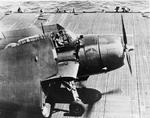 |  | 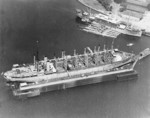 |  |
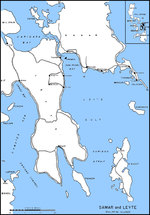 | 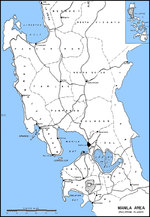 | 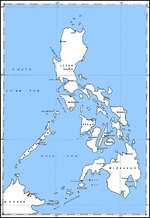 | 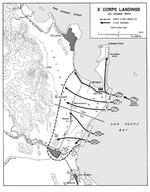 |
Philippines in World War II Interactive Map
Did you enjoy this article or find this article helpful? If so, please consider supporting us on Patreon. Even $1 per month will go a long way! Thank you. Share this article with your friends: Stay updated with WW2DB: |
Visitor Submitted Comments
30 Aug 2015 10:43:58 AM
Man's inhumanity toward man is a misnomer. It is unforunately quite within the capability of man to be within the bounds of humanity and still commit sickening acts of attrocious assualt and murder. Perhaps the one and only concept to be drillled into the minds and hearts of all children, all of the time, is that any degree of harm, done to anyone, for any reason, is totally unacceptable. It includes bullying, teasing, cheating, in any shape or form.
22 Oct 2016 08:34:45 AM
Philippines civilian military between 500,000 and 1,000,000 entire three years before JAPAN occupation with Americans - Filipino...,
11 Mar 2017 11:29:58 PM
The most unnecessary loss of life of the entire war took place in Manila. US Navy CINPAC knew there would be a large loss of life from any ground battle and it would be more efficient if the supply line to the Philippines was cut off. But MacArthur had to make his grandstand after declaring "I shall return". The results of the fighting were the largest civilian and military casualties suffered by the allies the entire Pacific Campaign. MacArthur was an egomaniac. It's no wonder he was referred to as 'An American Caesar'.
16 Aug 2017 05:09:36 AM
On WWII Has started and it end's and who is the comander of United States of America?
23 Feb 2018 05:34:37 AM
I am looking for my great grand father an USAF pilot soldier who died in phillipines during world war 2 hope you can help me. At least find his picture or record.
30 May 2018 01:02:54 AM
it is possible that i can track he record of my grandfather? any information will be much appreciated and helpful.
thank you so much
18 Aug 2018 09:56:02 PM
my grand father from spain soldger then bettle in in philippines from by side of spain army. then i want find my grand prents rletive in spain.. soo please let me knew if spain can hve record of my grand father in the spain army how come i get that record i wana found my rletive in spain. because am spainish blood too
8 Sep 2018 06:54:59 AM
Where was this unit during WW II? Army 199 AAA AW BN CAV. Can you define this unit?
24 Dec 2018 09:02:00 AM
Seeking information about a soldier that died in WWII. His name was Emiliano O. Sepno.
2 Oct 2019 03:39:06 PM
My father is 94 yo.. he said he serve in WW2 i will ask if his name is in the record in Camp Aguinaldo .. my Fathers name is Roman M. Lansang
Thank u .. for ur response
3 Apr 2020 05:41:20 PM
My great grandfather was a veteran however all of his records were lost like the important documents. now I wonder where can we find the list of the names of the veterans that was assigned in Bagong Bayan, Cataingan, Masbate City his name is Ramon R. Atazar. thank you.
11 May 2020 08:38:30 AM
My grandfather was a veteran .He has certificate but no name found in the list
8 Jun 2020 09:14:04 AM
My uncle, Felicitario Cabag, was a Filipino soldier in WW2. I would like to know the circumstances of his death in that war. Thank you.
12 Jun 2020 04:22:11 PM
My father was captured, tortured,and maybe executed during WW2 in Laguna province. His remains were NEVER recovered. He was a guerrilla leader with rank of 2nd Lt. His name is Alejandro C. Abary. I would like to know how exactly he died. I am his first son.
24 Nov 2020 10:57:23 PM
My Father's Uncle Pedro Abarsoza was a Philippine scout in Corregidor and he was a gunnery officer and was laid in the Philippine Heroes Cemetery in Fort Bonifacio, Taguig City... I would like to know the stories of our ww2 fathers that fought in it.. where would I go to interview? thank you.
14 Jun 2021 02:33:07 PM
where do I go to look for a list of all the casualties who served in the Philippine military during WW2.
11 Feb 2023 04:16:42 AM
My grandfather's brother Federico Vizconde de Leon. He fought in the WW2 in the Philippines. His remains were never recovered. We have been looking for any records to no avail. I would like to find any records about him. Thank you.
4 Jun 2023 07:00:16 AM
ako po ay apo ni Diosdado A. Ibarra.
na kinakailangan kopo sana mahanap ang mga docomento or information ng aking lolo sapagkat kinakailangan po ito.
at salamat sa pag asikaso
All visitor submitted comments are opinions of those making the submissions and do not reflect views of WW2DB.
- » WW2DB's 20th Anniversary (29 Dec 2024)
- » Wreck of USS Edsall Found (14 Nov 2024)
- » Autumn 2024 Fundraiser (7 Nov 2024)
- » Nobel Peace Prize for the Atomic Bomb Survivors Organization (11 Oct 2024)
- » See all news
- » 1,150 biographies
- » 337 events
- » 44,024 timeline entries
- » 1,241 ships
- » 350 aircraft models
- » 207 vehicle models
- » 375 weapon models
- » 123 historical documents
- » 260 facilities
- » 470 book reviews
- » 28,586 photos
- » 432 maps
Winston Churchill, on the RAF
Please consider supporting us on Patreon. Even $1 a month will go a long way. Thank you!
Or, please support us by purchasing some WW2DB merchandise at TeeSpring, Thank you!
25 Jul 2013 03:43:51 AM
It appears that there are errors regarding the number of military and civilian casualties during world war 2. Conservative estimates in the Philippines put the combined military and civilian casualties to between 500,000 and 1,000,000 during the entire three year Japanese occupation.